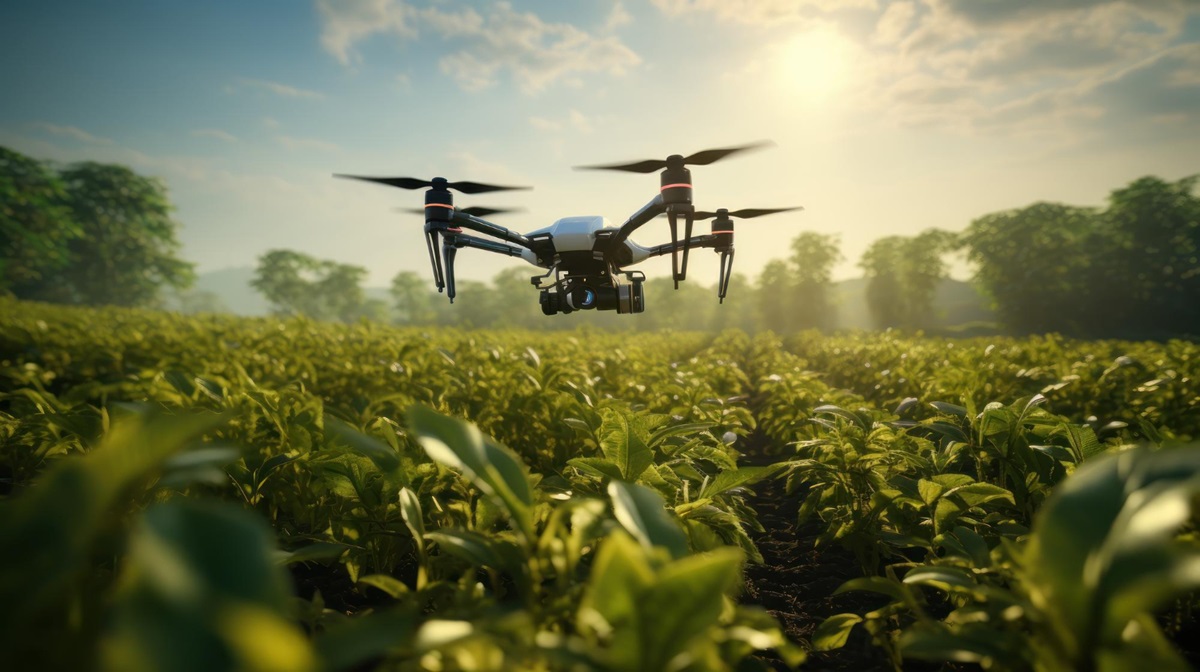
In the dynamic realm of agriculture, precision is key, and the advent of Global Imaging Technologies for Precision Agriculture is revolutionizing the way farmers approach crop management.
Role of Imaging Technologies in Precision Agriculture
In today’s world data is paramount, imaging technologies have become invaluable tools in the precision agriculture toolkit. From drones capturing aerial views to sensors providing ground-level insights, these technologies offer a comprehensive and real-time understanding of crop health, soil conditions, and overall farm performance.
The Global Imaging Technologies for Precision Agriculture Market size was $885.0 million in 2022, and with a CAGR of 11.27%, it is expected to reach $1,690.6 million by 2028.
Factors Driving the Adoption of Imaging Technology in Agriculture
Precision and Efficiency Drive Adoption:
- Farmers are compelled to optimize agricultural practices for precision and efficiency.
- Utilization of data-driven insights from imaging technologies is key.
- Enables identification of crop health issues and application of targeted treatments.
Cost Savings and Resource Optimization:
- Imaging technologies play a crucial role in achieving cost savings.
- Reduction of excessive resource usage, particularly in water and fertilizers.
- Minimization of chemical inputs and labor costs through automation.
Environmental Benefits and Sustainable Farming:
- Contribution to environmental benefits is a significant outcome of imaging technologies.
- Promotes sustainable farming practices.
- Reduces chemical runoff and preserves natural resources.
Climate Change Adaptation and Continuous Monitoring:
- In the face of climate change, imaging technologies are pivotal.
- Facilitate continuous crop monitoring.
- Assist farmers in adapting to changing conditions for enhanced food security.
Key Imaging Technologies Driving Precision Agriculture
- Satellite Imagery: Satellite-based imaging provides a macroscopic view of vast agricultural landscapes. With high-resolution imagery, farmers gain insights into crop health, moisture levels, and overall field conditions. Satellite technology enables large-scale monitoring, allowing for timely interventions and optimized resource allocation.
- Drone Technology: Drones have emerged as versatile assets in precision agriculture. Equipped with cameras and sensors, drones capture detailed aerial imagery, offering farmers a granular view of their fields. This real-time data aids in crop scouting, disease detection, and the identification of areas requiring specific attention.
- Hyperspectral and Multispectral Imaging: Hyperspectral and multispectral imaging technologies provide a nuanced perspective by capturing data beyond the visible spectrum. This enables farmers to assess crop health, identify nutrient deficiencies, and detect early signs of diseases that might not be visible to the naked eye.
Get Free Access to our Global Imaging Technologies for Precision Agriculture Market Research Report.
Applications Across the Agricultural Lifecycle
- Crop Monitoring and Management: Imaging technologies facilitate continuous monitoring of crops throughout their growth cycle. From assessing planting density to tracking crop health and growth patterns, these tools empower farmers to make informed decisions, leading to optimized yields.
- Soil Health Assessment: Understanding soil conditions is critical for efficient farming. Imaging technologies aid in soil health assessment by providing insights into moisture levels, nutrient content, and overall soil composition. This information guides precision irrigation and fertilization strategies.
- Pest and Disease Detection: Early detection of pests and diseases is crucial for preventing crop damage. Imaging technologies, especially through drones and sensors, enable rapid identification of potential threats. This proactive approach allows farmers to implement targeted interventions, reducing the reliance on pesticides.
Current Market Trends, Future Outlook and Considerations
- Integration with AI and Machine Learning: The integration of imaging technologies with Artificial Intelligence (AI) and Machine Learning (ML) is a notable trend in the precision agriculture market. This synergy enhances the analysis of imaging data, allowing for predictive modeling, anomaly detection, and customized recommendations.
- Growing Demand for Real-Time Data: The demand for real-time data continues to drive the adoption of imaging technologies. Farmers seek immediate insights to respond swiftly to changing conditions, optimize resource usage, and mitigate risks, further fueling the growth of the precision agriculture market.
- Expansion in Emerging Markets: Imaging technologies are witnessing increased adoption in emerging agricultural markets. As awareness grows and technological infrastructure improves, farmers in these regions are embracing precision agriculture to enhance productivity and sustainability.
- Data Security and Privacy Concerns: With the abundance of data generated by imaging technologies, addressing concerns related to data security and privacy is paramount. The industry must prioritize robust measures to safeguard sensitive agricultural information.
- Accessibility and Affordability: Ensuring that imaging technologies are accessible and affordable for farmers, especially in developing regions, remains a challenge. Efforts to bridge this gap will contribute to a more inclusive adoption of precision agriculture practices.
Conclusion
The Global Imaging Technologies for Precision Agriculture Industry represents a paradigm shift in farming practices. As these technologies continue to evolve and integrate with other innovative solutions, they pave the way for a more sustainable, efficient, and data-driven future in agriculture.
In conclusion, the marriage of imaging technologies with precision agriculture is not just a technological leap; it's a transformative journey towards a smarter and more resilient agricultural landscape.



























